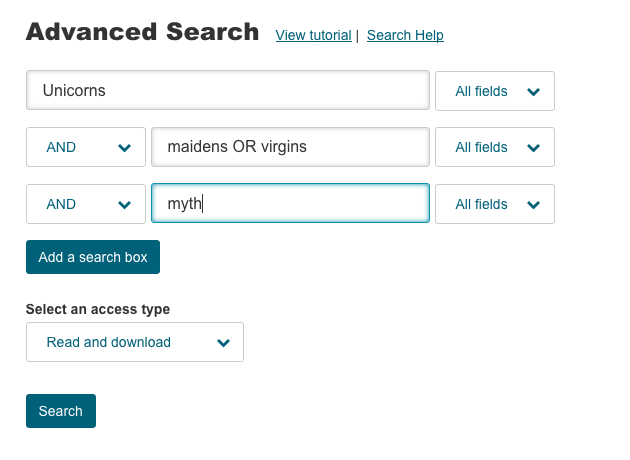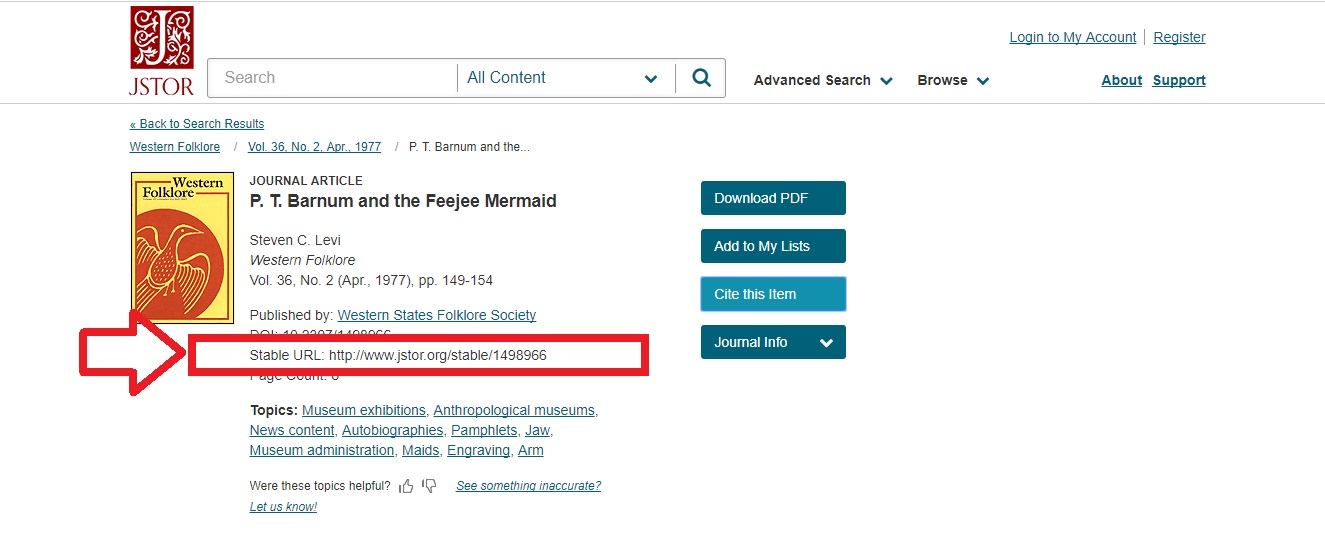What is JSTOR?
What is JSTOR?
JSTOR is a digital library of more than 1,900 academic journals, 19,000 books, and 2 million primary sources.
What subjects are covered?
Included are core journals in economics, history, political science, and sociology, as well as in other key fields in the humanities and social sciences. This collection also contains titles in ecology, mathematics, and statistics.
Is the information scholarly?
All materials are scholarly and academic. However, not all journals are peer-reviewed; because older journal issues may pre-date today's standard peer-review process and literary/primary materials would not have gone through a peer review process.
What period of time does it cover?
A select number of journal issues date back to the 19th century. Unlike many other databases, JSTOR does not contain publications' most recent articles. Its primary function is to preserve access to journals for future researchers. Journal articles are typically added 3 to 5 years after publication, in what is referred to as a moving wall.
For more information on JSTOR, please see our JSTOR guide.
Advanced Search
Advanced Search Overview:
Using the Advanced Search (rather than the basic search) allows researchers to narrow their results using criteria according to discipline, journal, author, date, etc. (Not ready for advanced searching? Check out our Basic Search Support page). The advanced search also allows researchers to search by multiple criteria at once.
This is especially helpful if you know exactly what you’re looking for and don’t want to have to narrow results after you search.
Advanced Search tips:
- Make sure you put text in at least one search field. You can then add up to 7 search fields to your query. But the customization doesn’t stop with search fields…
- From the Advanced Search page, scroll down past the “Search” button to see more ways to narrow your search by journal, discipline, and result type. When you're done filtering results, make sure to scroll back up and click "Search" again.
Advanced Search tools can vary widely across academic databases, in this article you will find how to use JSTOR's.
Quick tip: Want to search within a specific journal? In the "Narrow By" section of the Advanced Search, there is a field called "Journal or Book Title". Enter the name of the journal you want to search within there!
Boolean Operators on JSTOR
If you have too many results to sift through, results aren’t quite what you’re looking for, or you don’t get enough results, we have the tools to help.
Boolean operators are used to connect your search terms, and can be used to either narrow or broaden your search results. Boolean Operators are as follows: AND, OR, and NOT. You can type them manually, use them with the Boolean dropdown boxes on the advanced search, or use a combination.

AND:
Using “AND” will narrow your search results by telling the search engine to return results that have BOTH/ALL search terms present. Here’s how it works.
Searching JSTOR for the single word “unicorns” produces a very large set of results (over 4,000!).
But suppose a scholar is specifically researching the claim that unicorns appear to maidens. In that case, refining this set of results by adding the term “maiden” will decrease the number of results they have to sift through to find that perfect article.

All 141 results will include both the term “unicorns” and the term “maidens.”
OR:
Using the “OR” Boolean operator will expand your search results by telling the search engine to return results that have EITHER/ANY of the search terms present. It’s particularly useful in the case of synonyms.
Using the OR operator links keywords together and expands the search results:

NOT:
Using the “NOT” Boolean operator will narrow your search results by telling the search engine to exclude results that have that search term present.

This set of results is smaller than the one previous, and no longer includes any content with the word “myth.”
Boolean operators can be mixed and matched in any number of ways in an attempt to drill down and find that paper you didn’t even know you needed. Boolean logic also works nicely with the other tools in your research arsenal, like exact phrase and fielded searching. The research possibilities are endless.
Parentheses:
When your search query includes multiple Boolean operators, it is important to group them appropriately. In the example above, (maiden OR virgin) is grouped together by parentheses, making it a sub-query. By grouping the terms this way, you are telling the search engine what terms must be present and what terms are optional. This eliminates any confusion and ensures that the term “unicorns” must exist and that either term “maidens” or “virgins” may exist.
Quick tip: Looking for more ways to customize your search? You might want to look at Truncation, Wildcards, and Proximity next.
Stable URL
Ever wonder about the best way to link to something on JSTOR? We have an answer! JSTOR uses something called a "Stable URL." These web addresses are listed on every article, and they don't change, so you can cite that URL and know it can be accessed again later.
How to find a stable url:
You can find the Stable URL in the citation information for any article. It's right underneath the article title, on the left hand side of the screen.

You can use this Stable URL in the citation for your paper, in an email to support@jstor.org, in a Tweet, or in other communications, in complete confidence that it will link back to the right content. Woot!
Text Analyzer
Try Text Analyzer, from JSTOR Labs! It's a new way to search JSTOR: upload your own text or document, Text Analyzer will process the text to find the most significant topics and then recommends similar content on JSTOR.